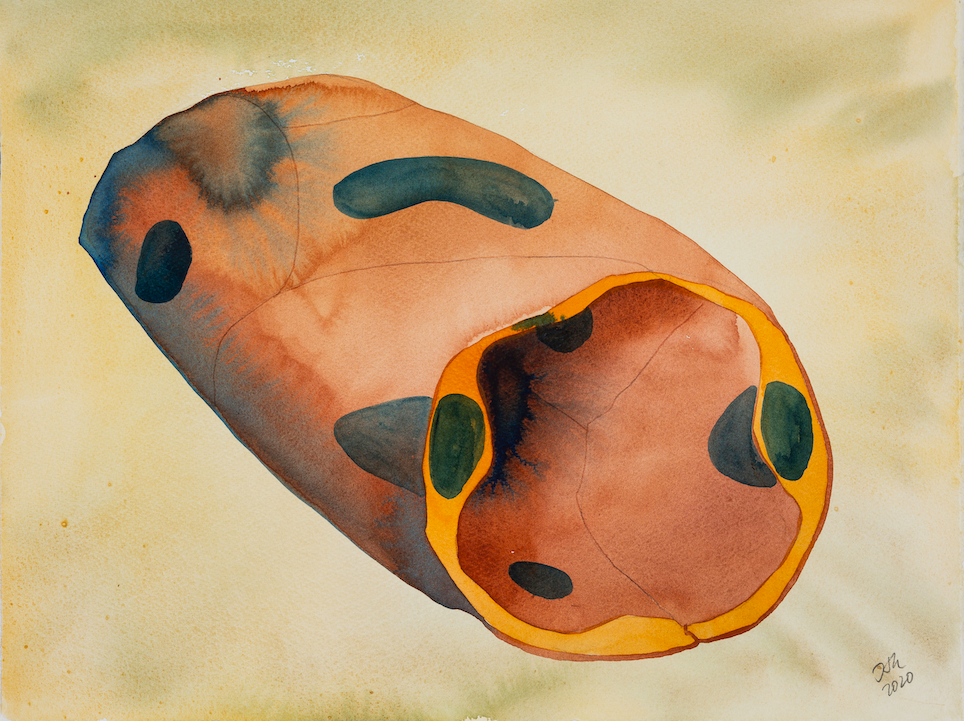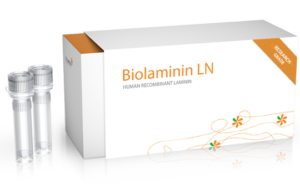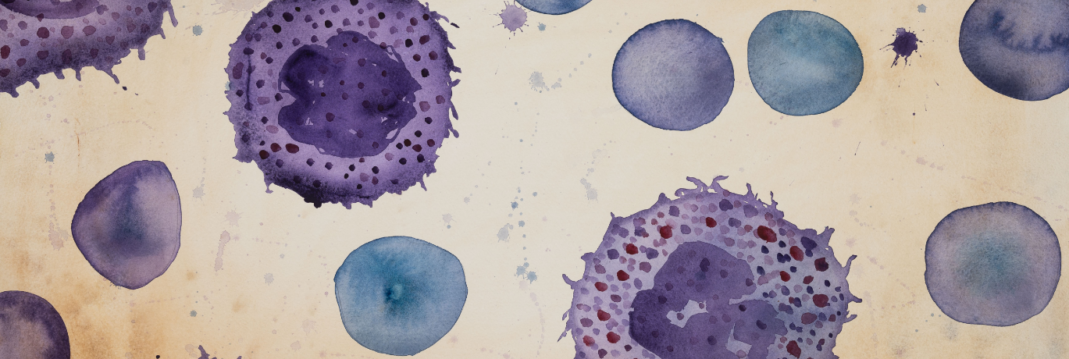Endothelial cells

Biorelevant culture of endothelial cells
Biolaminin isoforms for vascular endothelial cell culture
Endothelial cells that make up the vascular network in all organs of the body express and secrete laminin-411 and laminin-511 (Hallman et al., 2005). During angiogenesis, laminins are produced and deposited from the stalk cells to the tip cell filopodia (Jakobsson, 2008).
Primary endothelial cells, such as human umbilical cord endothelial cells (HUVECs), grow long-term on Biolaminin 521, -511, or -411 with continuous strong expression of the von Willenbrandt factor (vWF). Previously, mature endothelial cells were often grown on fibronectin which resulted in de-differentiation of the cells within hours to days that could be seen by a complete loss of specific endothelial markers (such as the vWF).
Endothelial progenitor cells were efficiently differentiated from human embryonic stem cells on Biolaminin 521 (Nguyen et al. 2016).
In addition to alpha5 laminins (laminin-511 and -521), alpha4 laminins (laminin-411 and -421) are present in endothelial basement membranes. Wagner et al. 2018 reported an endothelial switch from laminin 421 to 411 during aging and different endothelial cell properties on the isoforms.
Biolaminin 411 (laminin-411) alone was shown to induce endothelial differentiation of induced pluripotent stem cells with specific identified pathways responsible for this effect. The differentiation was clearly improved compared to collagen I or Matrigel, as well as over laminin-111 or -511 (Hall et al. 2022).
Isolation and expansion of corneal endothelial progenitors
Corneal endothelial cells (CECs) are highly polarized flat cells that form a uniform monolayer of the innermost layer of the cornea, separating the cornea from the aqueous humor that fills the anterior chamber. CECs play several essential roles in corneal homeostasis and are specialized in regulating corneal hydration and transparency.
The basal surface of the CSCs rest on an amorphous collagenous membrane, Descemet’s membrane, composed of type IV collagen, type VIII collagen, perlecan, nidogens, laminin-332, laminin-411, and laminin-511 (Kabosova et al., 2007). Integrin α3β1 is the only protein found exclusively at the basal surface of the CSCs, forming an almost homogenous layer (He et al., 2016). Ligands of the integrin α3β1, such as laminin-511 and laminin-521, are efficient coating substances that improve the yield of in vitro CEC cultures.
Corneal endothelial progenitors are efficiently isolated and expanded on Biolaminin 511 (Hara et al., 2014). Hara and colleagues demonstrate that the proliferative capacity of the endothelial progenitors is very high on laminin-511 compared to conventional methods. Biolaminin 511 can be used to rapidly isolate and expand a homogenous population of endothelial progenitors that can be differentiated into endothelial cells in a serum-free environment.
Succeed with your application
-
Laminin 411 mediates endothelial specification via multiple signaling axes that converge on β-catenin
Hall M.L., Givens S., Santosh N., Iacovino M., Kyba M. & Ogle B.M. Stem Cell Reports, 2022
Read more -
Differentiation of Human Embryonic Stem Cells to Endothelial Progenitor Cells on Laminins in Defined and Xeno-free Systems
Nguyen M.T.X., Okina E., Chai X., Tan K.H., Hovatta O., Ghosh S., Tryggvason K. Stem Cell Reports, 2016
Read more -
Instructions 001: Coating with Biolaminin substrates
Protocol and concentration calculations for coating cultureware with Biolaminin
Open pdf -
OtherMay 24, 2021
FAQ
Frequently Asked Questions This FAQ page provides answers to common questions about Biolaminin and B
Biolaminin Key Advantages
Biolaminin 411 and 521 coating improves endothelial progenitor proliferation. Biolaminin also helps to maintain cell identity in primary endothelial cell culture.
Specific laminin isoforms are present in different tissue microenvironments and are essential for cell survival, proliferation, and differentiation. Biolaminin products allow you to imitate the natural cell-matrix interactions in vitro.
Our products have consistent composition and quality. This enables minimized variability between experiments.
All our matrices are chemically defined and animal origin-free, which makes them ideal substrates for each level of the scientific process – from basic research to clinical applications.
Numerous scientists have found our products and finally succeeded in their specific stem cell application. The power of full-length laminins incorporated into various cell systems is well documented in scientific articles and clinical trials.
Recommended products
-

Biolaminin 521 LN (LN521)
Full-length human recombinant laminin-521
Biolaminin 521 LN is a full-length laminin-521 substrate—the natural laminin for pluripotent stem cells, reliably facilitating ESC and iPSC self-renewal in a chemically defined, xeno-free stem cell culture system. It also uniquely promotes the growth and identity of various tissue-specific human cell types.View product -

Biolaminin 411 LN (LN411)
Full-length human recombinant laminin-411
Biolaminin 411 supports diverse tissue cell types such as cells from the pancreas and the vascular, immune, nervous, and hematopoietic systems.View product

Talk to our team for customized support
We are here to help you in your journey.